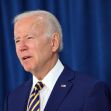When Biden signed the $1.9 trillion COVID-19 relief legislation, he was also approving about $40 billion in funds for higher education. Provisions were included for student loan forgiveness and financial aid. The provisions were targeted at schools with small endowments and large quantities of Pell Grant recipients. Funds are intended to help schools invest in virtual and remedial education, reduce class sizes, meet COVID-19 safety standards and help students with emergency grants.
Although federal funds have already been made available for students and higher education institutions during the pandemic, this is the largest funding to date. The March 2020 CARES Act allocated about $14 billion, and in December, an additional $23 billion went to higher education institutions through the Coronavirus Response and Relief Supplemental Appropriations Act.
Though large, the $40 billion is still less than the $97 billion the American Council on Education determined students and educational institutions would need to recover from pandemic-related losses.
Financial Aid
Each institution is required to put at least 50% of the funding they get toward emergency financial aid for students. The institution can decide which students will get the financial aid, though. Some institutions may choose to give most of the money to Pell Grant recipients, but others could make funding available to a wider group.
Even though they get a choice about where to distribute funds, schools are also bound by federal restrictions on the funding. For the March 2020 CARES Act funding, in order to give aid to students, the student had to meet particular criteria, like having a high school diploma or GED, or completing high-school in an approved home school setting and having a valid Social Security number.
For the December funding and this current allocation, schools were directed to give priority to those with exceptional financial needs. It is not clear yet whether non-citizens, including those in the Deferred Action for Childhood Arrivals (DACA) program or international students, will qualify.
Once students have the funds, they can use them for any element of their attendance at school, including child care, mental health care, tuition, food, housing, healthcare, and any other emergency costs that are pandemic-related.
It is possible that students will be required to complete an application to get funds in some schools. Others may be given payments based upon their qualification for Pell Grants or with low expected family contributions as reflected in their FAFSAs.
It may take a few weeks for the institutions to determine how the funds will be allocated. ”Where this gets difficult is, we don’t know right now if undocumented or DACA or international students can get those funds, so there are some schools that hope that’s the case, and they aren’t pushing all of their funds out yet,” said Megan Coval, vice president of policy and federal relations at the National Association of Student Financial Aid Administrators. She said there is no written guidance yet from the U.S. Department of Education.
Part of the legislation included a directive that $91 million be used to help students and borrowers. This money is to be used to help them figure out how to fill out federal financial aid forms and how to get unemployment assistance and other benefits they may have access to because of the pandemic.
Student loans
Because of the pandemic, since March of 2020, federal student loans are in a forbearance period. Those with loans are allowed to stop making payments until October 1, 2021.
The new legislation provides that any student debt forgiven after December 31, 2020, and before January 1, 2026, won’t be taxed. This is a huge benefit for some, as usually any forgiven debt is treated as taxable income.
The people most affected by this provision will likely be those on income-based repayment plans (IBR). Loans set up on an IBR are repaid based upon the recipient’s income over a period of 20 to 25 years. If after the 20 or 25 years, the loans aren’t fully repaid, any balance left over is forgiven. Usually, the forgiven balance would be taxed at the borrower’s normal income tax rate.
Bankruptcy
Under ordinary conditions, student loans are not dischargeable in bankruptcy. There are provisions made though, for an attempt to discharge them. According to Federal Student Aid, you can attempt to discharge your student loans by filing a separate action, called an “adversary proceeding,” requesting that the bankruptcy court recognize that to repay the student loans would place undue hardship on you and your family. You must declare a Chapter 7 or Chapter 13 bankruptcy in order for the adversary proceeding to take place.
Bankruptcy courts may look at a variety of factors to determine whether you would face “undue hardship” if you repaid your loans. Those factors include whether you would be able to maintain a minimal standard of living if you were forced to repay the loan, whether the hardship will continue for a significant period of the loan repayment period, and whether you have made good faith efforts to repay the loan before filing bankruptcy.
If they decide repayment would cause undue hardship, the bankruptcy court could dismiss your loan in its entirety. They could discharge a part of your student loans and leave a portion left to be repaid. Or they may require you to pay the loan with different terms — perhaps a lower interest rate.
What's next
There are suggestions that the lack of taxation on student loan debt forgiven for that specific period between the end of 2020 and the start of 2026 may be the precursor to even deeper debt forgiveness. Congress may cancel private student loans. They may cancel FFELP and Perkins loans. It’s hard to predict what comes next, but there seems to be hope for those buried under mounds of seemingly everlasting student loan debt.






